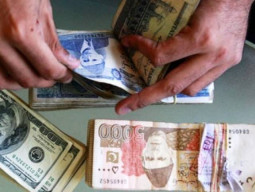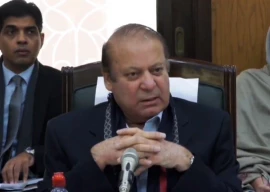
Let us start with some facts. First, Pakistan has a dismal record on maternal health, with deaths around delivery amongst the highest in the world. Chronic diseases among women are also very high, despite often being underreported due to a male-dominated societal structure. Second, in Pakistan, women are far more likely to go to a female doctor for their health challenges than a male doctor. Third, when it comes to pre-medical students and admissions standards set by medical schools, girls outperform boys by at least two-to-one, i.e., based on merit, our medical schools get 66 per cent or more female students or about 33 per cent or less male students. Fourth, societal expectations, high barriers for women to join the workforce, systemic biases and dangerous conditions for personal security in many rural areas make it impossible for women to serve in remote parts of the country.
Now, let us look at another fact. Fully aware of these ground realities, the national custodian of medical education and training, the Pakistan Medical and Dental Council (PMDC), recently required that all public medical colleges must have a 50 per cent quota for men. In other words, admit fewer females, despite them outperforming boys, and admit more boys despite them not doing as well as the girls in the entrance exams. The arguments given by the PMDC showed the classic biased mentality that is enshrined in our male-dominated, female suppressing, unfair system. The official statement wore a thin cloak of gender equality to hide the ugly beast of discrimination, while at the same time indicating that national resources are being wasted on females. Some went as far as to say that girls use their medical college admission to get better suitors for marriage. When these views are expressed by those who have not had any education or training, one would call them most unfortunate and inappropriate. When they come from doctors and professionals in medical education, they are outright disgusting and show a rotten core. They point to the misogyny that has enveloped society.
It is indeed true that many female graduates are unable to perform in far-flung areas, but saying that it is because of lack of interest or motivation is simply not true. We have systemic barriers, including lack of security for female doctors, combined with societal expectations about the role of a woman, that play a central role in stopping our talented women to serve. Instead of creating public awareness, increasing support for women doctors who want to work, and lobbying the government to improve security and create better policies, the PMDC, which historically has been male-dominated, has decided to not only embrace discrimination, it has also put the blame for our poor rural health squarely on female doctors.
The PMDC needs to look at the extraordinary contributions of female medical professionals in the country in addressing most difficult challenges. In my own work in global public health, I have met far more women than men from Pakistan, who are making a profound contribution in decreasing maternal mortality, improving child health and helping in strengthening the system at all levels. At every conference that I have attended on improving health outcomes in Pakistan’s rural areas, there are more women professionals than men. The contribution of female physicians and medical researchers is of the highest quality and shows the determination and passion that is needed to change our current course. The results from the work by Pakistani female public health professionals are used as models and textbook examples around the world. These women are making a tangible positive change, through sheer will and determination, despite societal pressures, unjust barriers and the bias embraced by the likes of the PMDC. It would be better off recognising the contribution of brave women doctors and public health professionals of the country, and in doing so, would hopefully encourage other men and women to improve our national health, both literally and figuratively.
Published in The Express Tribune, October 14th, 2014.
Like Opinion & Editorial on Facebook, follow @ETOpEd on Twitter to receive all updates on all our daily pieces.
COMMENTS (12)
Comments are moderated and generally will be posted if they are on-topic and not abusive.
For more information, please see our Comments FAQ















































Khan : it matters an awful lot. We need to have female voice in key decision making. They are more sensitive to challenges faced by women. Would you not agree?
Ideally, we should have 50/50 ratio of males/females in medical colleges and in professional practice also. However, we cannot do that by making rules based on gender discrimination. In 1980s, supreme court declared allocation of 50/50 seats for males/females unconstitutional and I'm sure will do so again if approached. We have about 2:1 ratio in favor of females in colleges but worse than the reverse in professional practice and that is the issue. Yes, because of societal pressures most female graduates don't practice, but some males also leave to foreign countries. One solution could be a 5 year mandatory practice after graduation or full payment of medical school tuition. But this can only be enforced if opportunities and safe working environment are provided. Also, we should attract more boys to pre-medical and girls to other fields as pre-medical enrollment is lopsided too and that is where the problem starts.
@Reshma: why does it matter?
So here is a simple question - why does PMDC, a male dominated body, gets to decide the fate of female students? Any thoughts?
@blunt Actually PMDC was reinstated, besides that's not the point. The point is that we are missing the real issue, the core problem and blaming women.
@PakOne: exactly - we need to address societal issues - not make the opportunities fewer for women.
The article revolves around the expected actions of PMDC. But let me tell you that current structure and body of PMDC is illegal and unconstitutional as per directed by the Islamabad High court. Hence, no actions could be considered as valid taken by the current PMDC.
Agreed we, are way behind the world standards in matters of health. But the reasons should be clear to all.
Don't we have to maintain the fifth largest Army in the world? And, don't we have to keep a large enough Nuclear arsenal? Less we talk about the police force and the Rangers etc. the better. Can Pakistan survive without all these? Where is the money for fancy health matters? There is no grant for these things from USA or the Saudis even!
I have to disagree with the respected author. The facts are: 1. Pakistanis subsidize medical school through their tax dollars. 2. There is an upper limits to the maximum student that can be enrolled in a given year. 3. Out of all the female medical graduates, more than 50% chose not to practice medicine after marriage. Due to our society's tendency of pressuring girls for marriage while they are young, means that most of the female medical graduates never (or for a very short period after graduation) practice medicine 4. Most (>90 %) of the male medical graduates practice medicine for their entire life.
People like you, Muhammad Hamid Zaman, are the last hope for all of us here. It is clear from your articles that you are both intelligent and sensitive, Mash'Allah. Thanks for writing this and doing what you do. Having said that a lack of discussion beneath this article frightens me as I too am a Pakistani woman.
Makes me proud that a man wrote this. Not all men are misogynists.
I think you over-estimated the 'performance' factor when it comes Boys vs Girls in the centralized medical entrance exam. In the year 2011-2012, 61358 girls and 29236 boys were enrolled in the pre-medical branch of intermediate classes in Punjab. This is a 2.09 factor of girls to boys. The fact that girls are in higher numbers at the top in BISEs pre-medical exams or in the centralized entrance test is due to their higher numbers in the stream itself. There is no evidence to suggest they are outperforming boys.
Since most seats in medical colleges are on merit (even with the reserved 10% female criteria, special quotas etc and there are few A levels students compared to F.Sc ones), the total medical colleges enrollment in Punjab in 2011-2012 was 11896 girls and 6138 boys. That is a factor of 1.93. It'd either suggest boys actually outperforming girls or girls dropping out before medical college or pursuing other degrees in a higher percentage. At the post-graduate medical category, we see the high female non-workforce participation rate with 365 females for 327 males.
Female enrollment at the medical college stage has continued to increase. In 2002-2003, it was 5690 for 4107 boys, a factor of 1.38. It increased 40% in 9 years and continues to increase.
For the record, the ratio at dental colleges is even worse. 1253 girls for 492 boys. A factor of 2.54.
All numbers are from Punjab Development Statistics 2013.